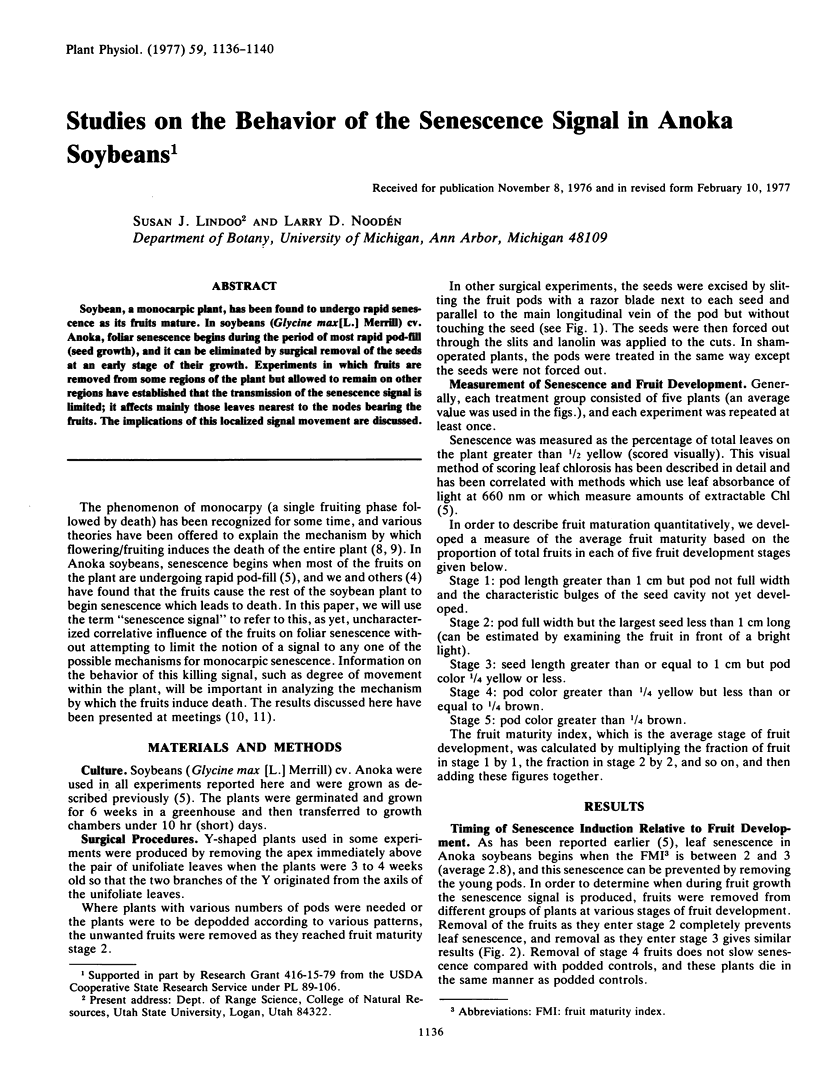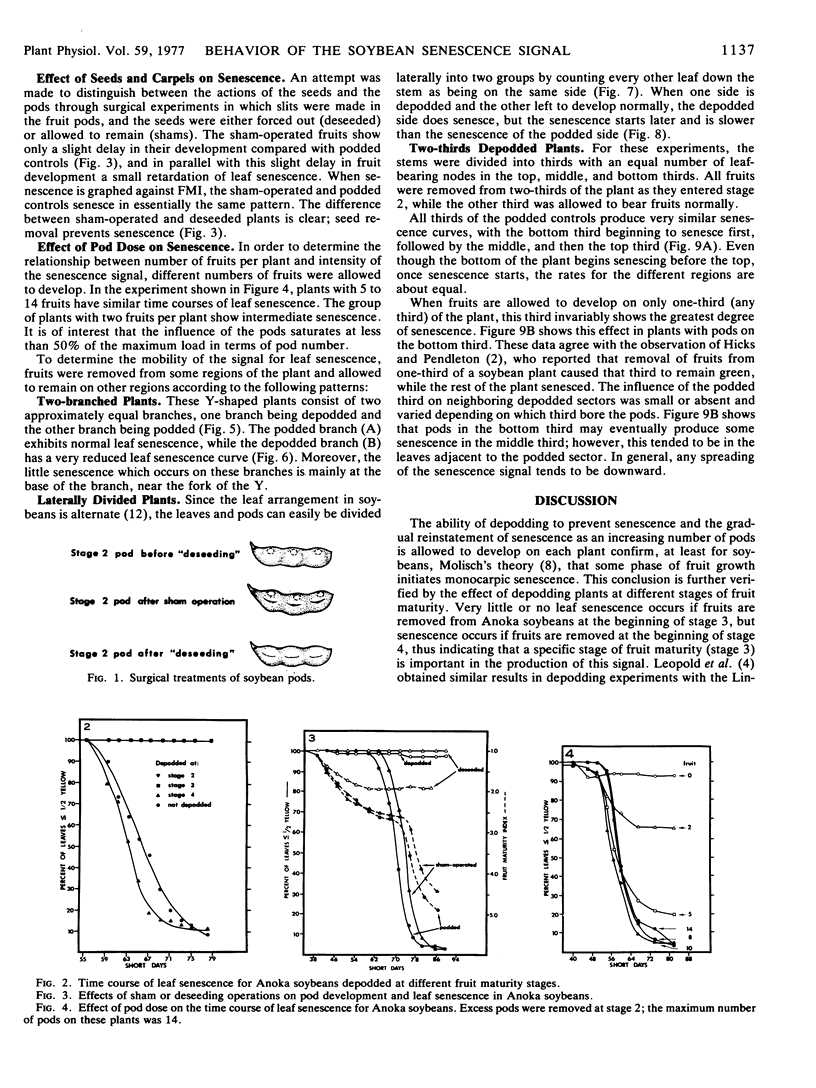Abstract
Soybean, a monocarpic plant, has been found to undergo rapid senescence as its fruits mature. In soybeans (Glycine max[L.] Merrill) cv. Anoka, foliar senescence begins during the period of most rapid pod-fill (seed growth), and it can be eliminated by surgical removal of the seeds at an early stage of their growth. Experiments in which fruits are removed from some regions of the plant but allowed to remain on other regions have established that the transmission of the senescence signal is limited; it affects mainly those leaves nearest to the nodes bearing the fruits. The implications of this localized signal movement are discussed.
Full text
PDF




Selected References
These references are in PubMed. This may not be the complete list of references from this article.
- Leopold A. C., Niedergang-Kamien E., Janick J. Experimental Modification of Plant Senescence. Plant Physiol. 1959 Sep;34(5):570–573. doi: 10.1104/pp.34.5.570. [DOI] [PMC free article] [PubMed] [Google Scholar]
- Wareing P. F., Seth A. K. Ageing and senescence in the whole plant. Symp Soc Exp Biol. 1967;21:543–558. [PubMed] [Google Scholar]


